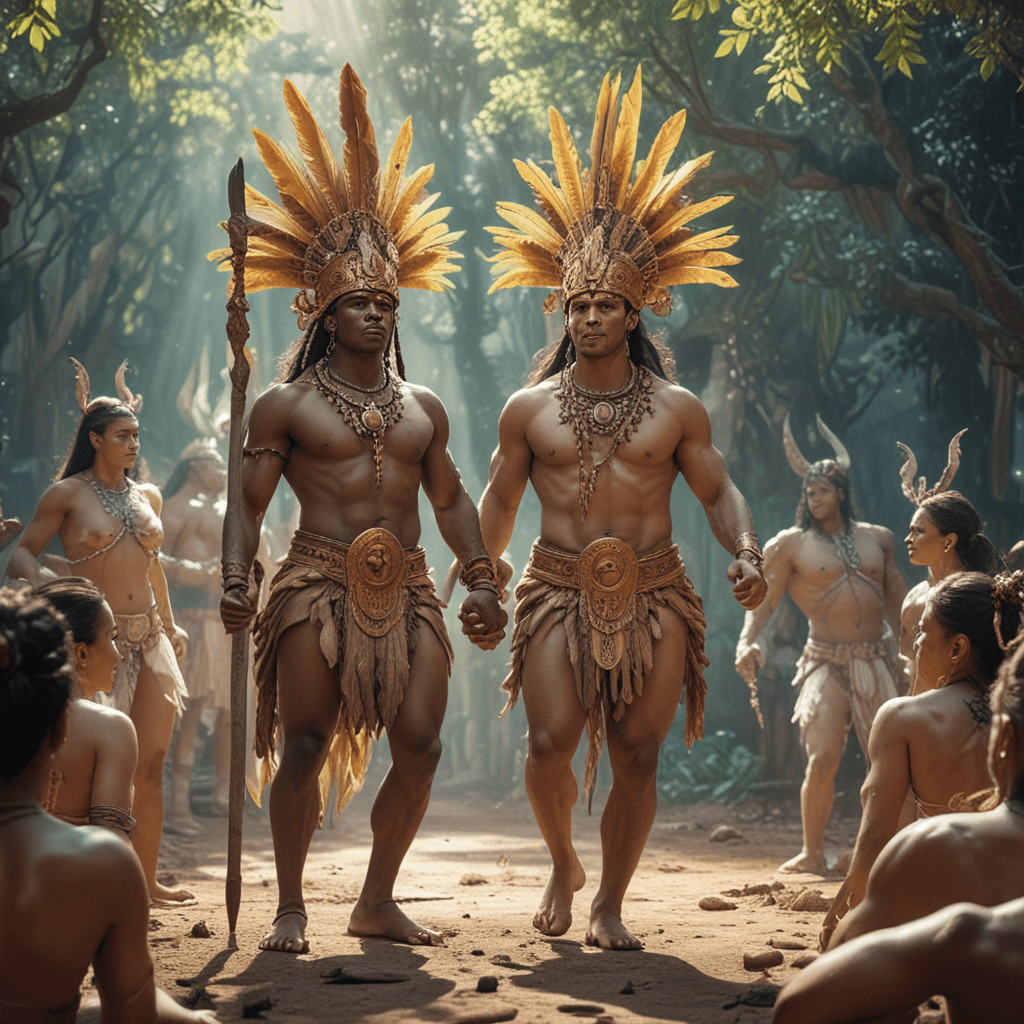The Myth of the Three Pure Ones in Chinese Mythology
I. Introduction
Chinese mythology is a rich and vibrant tapestry of legends, myths, and tales that have shaped the beliefs and traditions of the Chinese people for centuries. Among the most prominent and enduring figures in this mythological landscape are the Three Pure Ones, a revered triad of deities who hold a central place in Taoist cosmology and practice. This article explores the origins, symbolism, and enduring influence of the Three Pure Ones in Chinese mythology, offering a glimpse into their divine attributes, their role in creation, and their profound impact on Chinese culture.
II. Historical Background
The roots of the Three Pure Ones can be traced back to ancient Chinese religious practices and beliefs, particularly those associated with Taoism, a philosophical and spiritual tradition that emphasizes harmony with the natural world and the pursuit of immortality. The concept of a trinity of supreme deities emerged during the Eastern Han dynasty (25-220 CE), when Taoism began to systematize its beliefs and practices. Over time, the Three Pure Ones came to be recognized as the highest deities in the Taoist pantheon, embodying the fundamental principles and virtues of the Taoist worldview.
III. The Three Pure Ones: Concept and Symbolism
The Three Pure Ones are represented by three individual deities: Yuanshi Tianzun, Lingbao Tianzun, and Daode Tianzun. Yuanshi Tianzun, the "Primordial Heavenly Venerable," is considered the father of the other two deities and the creator of all things. Lingbao Tianzun, the "Treasured Scripture Heavenly Venerable," is associated with divine knowledge and wisdom. Daode Tianzun, the "Way and Virtue Heavenly Venerable," embodies the teachings of Taoism and is often identified with the legendary sage Laozi, the reputed author of the Tao Te Ching. Collectively, the Three Pure Ones represent the highest principles of Taoist cosmology: the Dao (the Way), De (Virtue), and Jing (Essence).
VI. The Divine Attributes of Sanqing
The Three Pure Ones are endowed with a vast array of divine attributes that reflect their cosmic nature. Yuanshi Tianzun is associated with creation, omnipotence, and the boundless void from which all things emerge. Lingbao Tianzun embodies wisdom, knowledge, and the secrets of the universe. Daode Tianzun represents virtue, harmony, and the eternal principles of the Tao. Together, they embody the ultimate source of all existence, understanding, and morality in the Taoist worldview.
VII. Rituals and Worship of the Three Pure Ones
The Three Pure Ones are revered in Taoist rituals and ceremonies. Temples and shrines dedicated to them are found throughout China, where devotees offer prayers, incense, and libations to seek their blessings and guidance. Specific rituals are performed on significant dates in the Taoist calendar, such as the Three Pure Ones' Festivals, which celebrate their divine attributes and powers.
VIII. The Influence of Sanqing on Chinese Culture
The Three Pure Ones have had a profound influence on Chinese culture beyond the realm of religion. Their concepts have been incorporated into philosophy, art, literature, and even martial arts. The Three Pure Ones are often depicted in Chinese paintings, sculptures, and carvings, embodying the highest ideals of spirituality and cosmic harmony. Their teachings have influenced the development of Chinese ethics, emphasizing virtues such as compassion, humility, and reverence for nature.
IX. The Myth of Creation and the Role of Sanqing
In Taoist mythology, the Three Pure Ones play a central role in the creation of the universe. According to legend, Yuanshi Tianzun emerged from the primordial void and emanated the Three Pure Ones, who in turn created the heavens, the earth, and all living beings. This myth reflects the Taoist belief in the interconnectedness of all things and the role of the divine in the origin and evolution of the cosmos.
X. Conclusion
The Myth of the Three Pure Ones is a testament to the rich imagination and spiritual beliefs of the Chinese people. These three deities embody the fundamental principles of Taoism, representing creation, wisdom, and virtue. Their enduring influence on Chinese culture has shaped the nation's philosophy, art, and religious practices for centuries. The Three Pure Ones continue to inspire devotion and reverence among Taoists and serve as a source of wisdom and guidance for all who seek to understand the mysteries of the universe.
FAQs
1. Who are the Three Pure Ones?
The Three Pure Ones are the highest deities in the Taoist pantheon, representing creation (Yuanshi Tianzun), wisdom (Lingbao Tianzun), and virtue (Daode Tianzun).
2. What is the significance of Sanqing in Taoism?
Sanqing embody the fundamental principles of Taoism and are considered the ultimate source of all existence, understanding, and morality.
3. How are the Three Pure Ones worshipped?
Sanqing are revered in Taoist temples and shrines through rituals, prayers, and offerings. Specific festivals celebrate their divine attributes and powers.
4. What is the role of the Three Pure Ones in Chinese mythology?
In Taoist mythology, Sanqing play a central role in the creation of the universe, emanating from the primordial void to create the heavens, earth, and all living beings.
5. How have the Three Pure Ones influenced Chinese culture?
Sanqing's concepts have influenced Chinese philosophy, art, literature, and even martial arts, embodying the highest ideals of spirituality and cosmic harmony.




